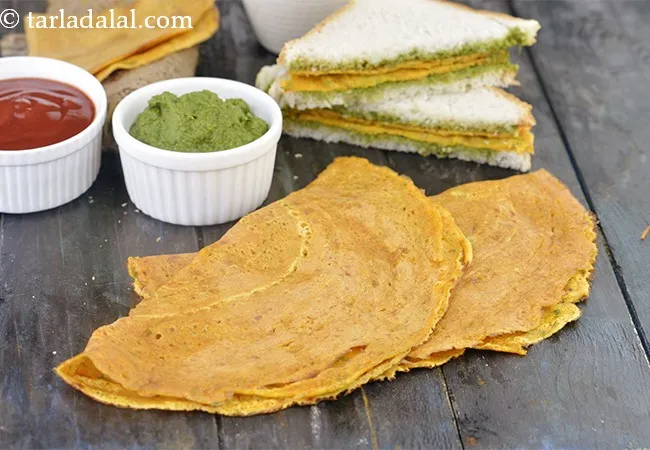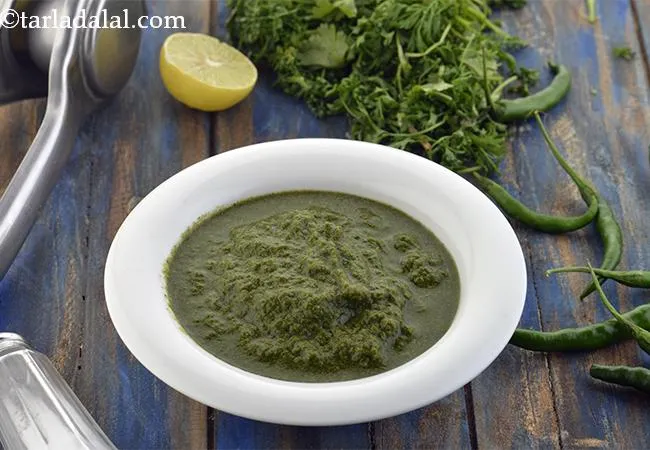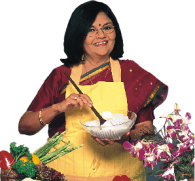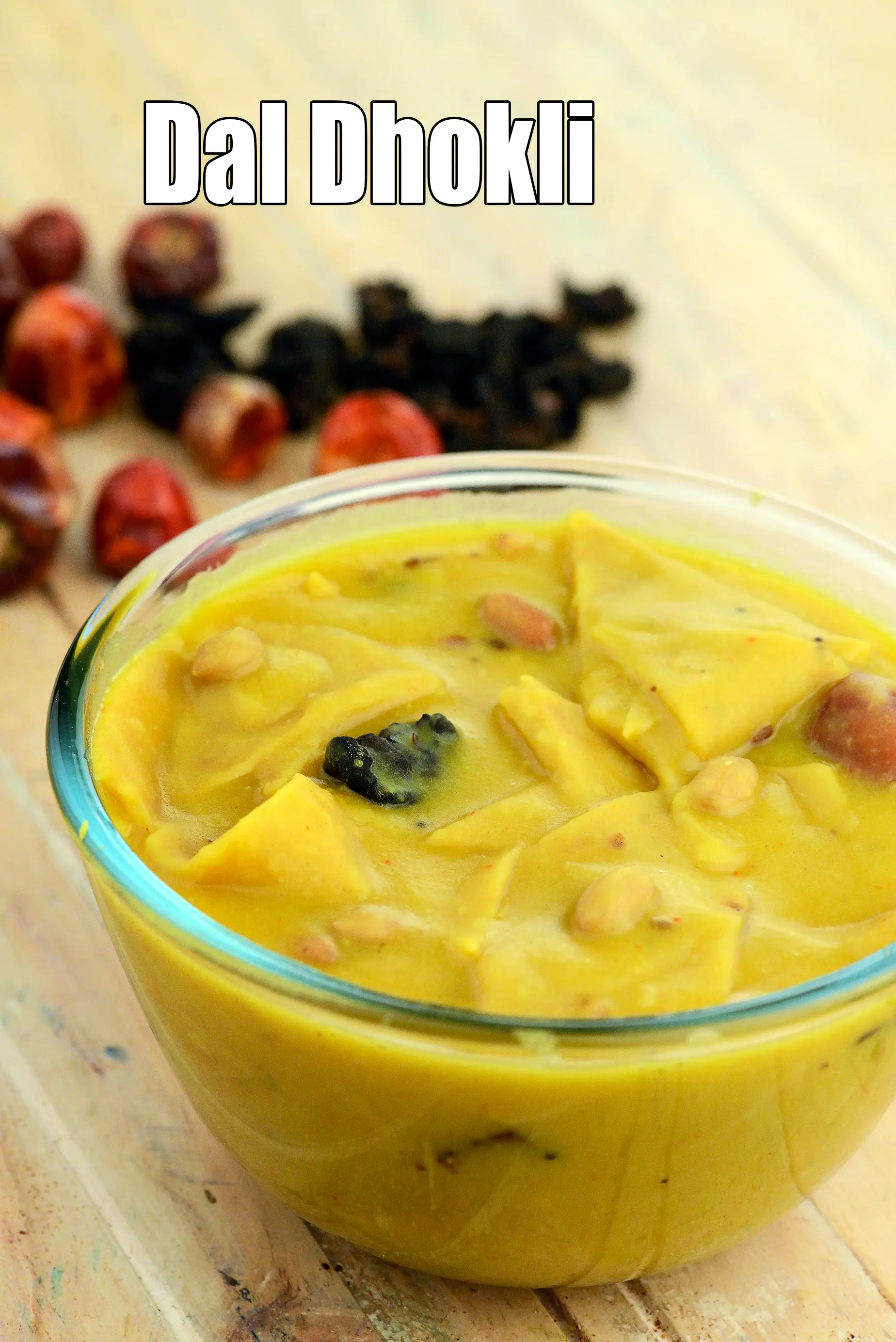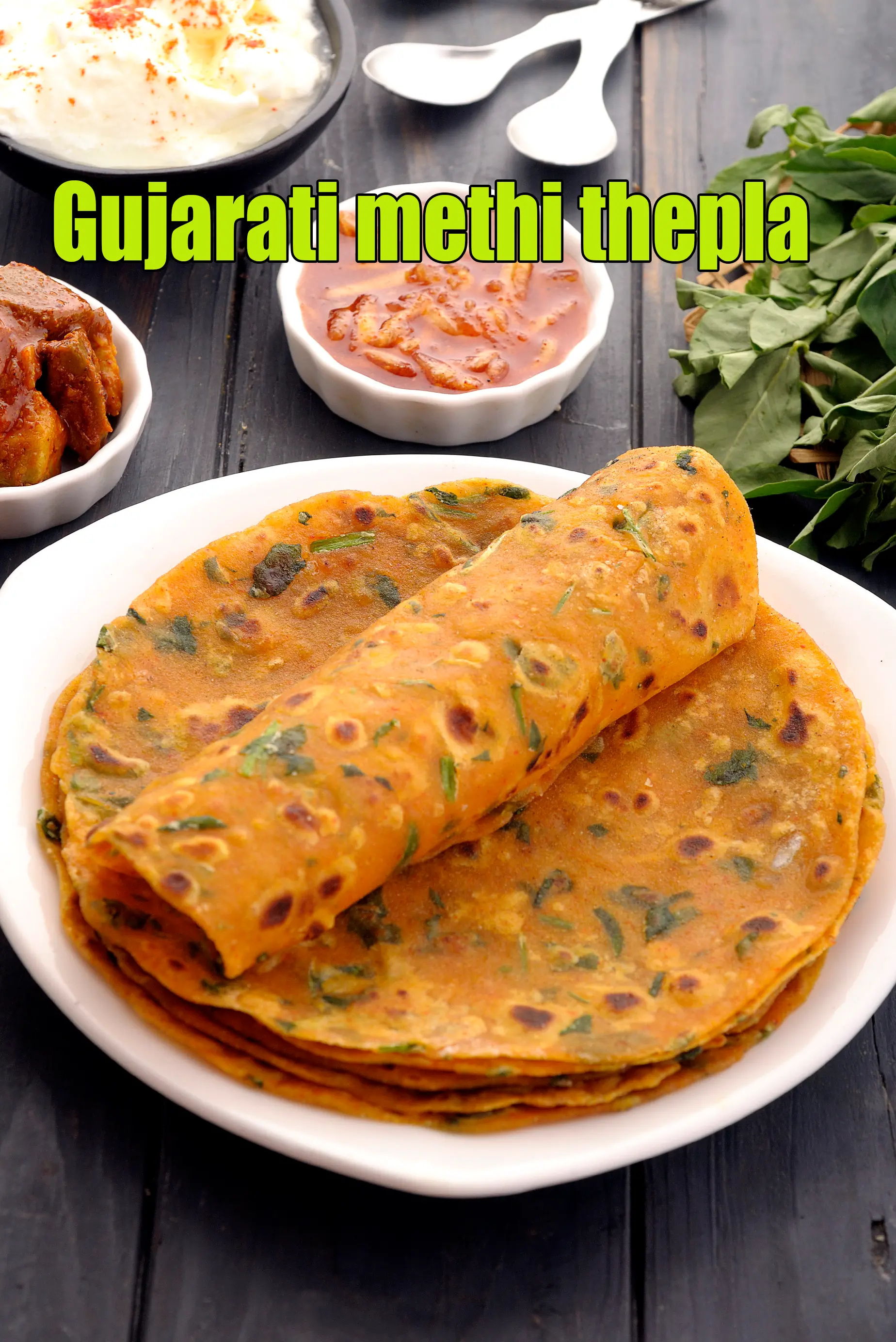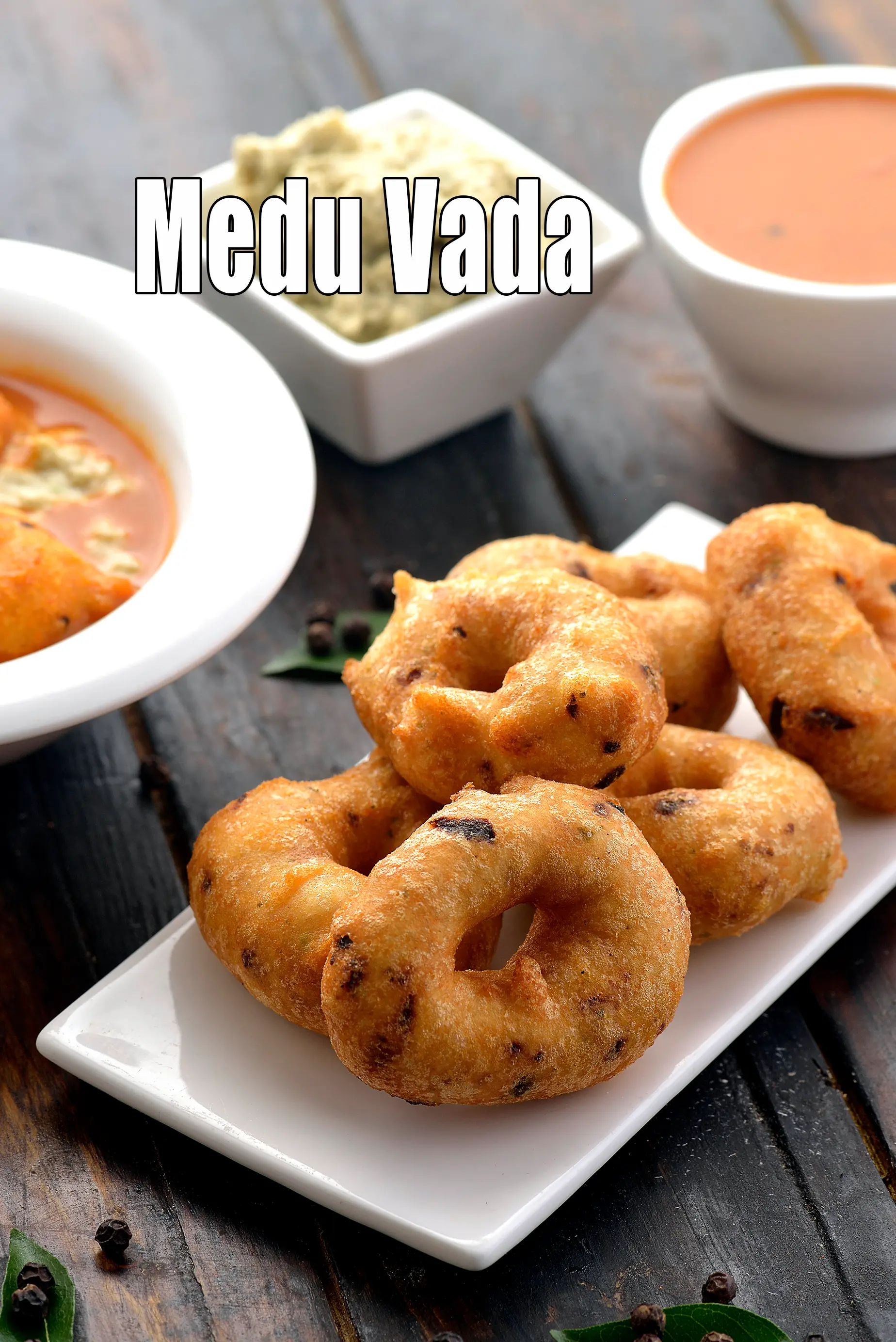Nutritional Facts of Mixed Dal Chillas, Healthy Breakfast, Snack Recipe, Calories in Mixed Dal Chillas, Healthy Breakfast, Snack Recipe
This calorie page has been viewed 17533 times
Kids Recipes
Course
Healthy Indian Recipes
Table of Content
How many calories does one Mixed Dal Chillas have?
One Mixed Dal Chillas gives 53 calories. Out of which carbohydrates comprise 28 calories, proteins account for 12 calories and remaining calories come from fat which is 13 calories. One Mixed Dal Chillas provides about 3 percent of the total daily calorie requirement of a standard adult diet of 2,000 calories.
See recipe mixed dal chilla recipe | healthy mix dal chilla | pulse chilla | pancake with lentil | with 27 amazing images.
mixed dal chilla recipe are so tasty you will love to snack on them any time; at the same time they are so satiating that you can even have them for breakfast. Learn how to make healthy mix dal chilla.
These thin, savoury pancake with lentil are made with a batter of mixed dals perked up with ginger, green chillies and other ingredients. It is both tasty and filling. At the same time, it is also easy to make. It requires only an hour of soaking and no fermentation, so you can make it any time you wish.
To make mixed dal chilla, combine the green moong dal, yellow moong dal and urad dal in a deep bowl with enough hot water. Cover with a lid and keep aside for 1 hour. Drain well. Combine the soaked and drained dals along with ¾ cup of water in a mixer and blend till smooth. Transfer the mixture into a deep bowl, add all the other ingredients and mix well. Heat a non-stick tava (griddle). Pour a ladleful of the batter on it and spread it evenly to make a thin circle of 175 mm. (7") diameter. Cook, using ¼ tsp of oil, till it turns golden brown in colour from both the sides. Repeat steps 4 and 5 to make 9 more chillas. Serve immediately with green chutney.
The use of mixed dals makes these mix dal chilla, rich in protein and vitamin B1. While protein is a key nutrient for maintaining cell health, vitamin B1 helps in energy metabolism and ensures a supply of energy to these cells of the body.
With 53 calories per pulse chilla Indian snack are not only perfect for snack time, in fact they can also be a nourishing and wholesome light dinner when served with green chutney. You can also try other healthy chila recipes like Besan Chilla.
Besan Chilla, Besan Cheela
The presence of fibre in these pancake with lentil, make them a wise choice for heart patients, diabetics as well as weight watchers and even women with PCOS. Cooked with ¼ tsp oil per pancake, they are a good balance of flavour and nutrition in one package.
Tips for mixed dal chilla. 1.Use hot water for soaking, as they tend to soften quickly. 2. The batter you make should be pouring consistency. The quantity of water used often depends on the quality of the dals. So at step 2 add water gradually. 3. Make sure you serve the chillas immediately after preparation as they tend to get chewy on cooling.
Is Mixed Dal Chillas healthy?
Yes, this is healthy.
Let's understand the Ingredients.
Moong Dal ( Green Moong Dal ) : Moong dal or green moong dal is rich in Folate, Vitamin B9 or Folic Acid which helps your body to produce and maintain new cells, especially red blood cells and is pregnancy friendly. Being rich in Antioxidants like Flavonoids, mung reduces the damage done by free radicals to the blood vessels and lowers inflammation. Moong Dal is heart and diabetes friendly. Moong Dal or Split Green Gram are high in Fibre and 1 cup of cooked Moong dal gives 28.52% of your daily Fibre requirements. See here for 9 fabulous benefits of Moong Dal.
Yellow Moong Dal : The fibre (4.1 g in ¼ cup) present in yellow moong dal prevents the deposition of bad cholesterol (LDL) in the arteries which promotes a healthy heart in turn. Packed with nutrients like zinc (1.4 mg), protein (12.2 mg) and iron (1.95 mg), yellow moong dal helps to maintain the elasticity of your skin and help to keep it moist. Fiber, potassium and magnesium from yellow moong dal will work together to regulate blood pressure and soothe the nerves and is diabetic friendly. See here for details of 7 amazing benefits of yellow moong dal.
Urad Dal : 1 cup of cooked urad dal gives 69.30% of your daily requirement of folic acid. The folic acid in urad dal helps your body to produce and maintain new cells, especially red blood cells. Being rich in Phosphorus it works with Calcium to build our bones. It is also high in fibre and good for heart, good for lowering cholesterol and good for diabetes. See here for 10 super benefits of urad dal.
Green Chillies : Antioxidant vitamin C in green chillies protects the body from effects of harmful free radicals and prevents stress. It is probably the high fiber which helps in controlling blood sugar levels. This it is a welcome addition to a diabetic diet. Suffering from anaemia? Add green chillies to your list of iron rich foods too. For complete details see benefits of green chilli.
Ginger (Adrak) : Ginger is an effective cure for congestion, sore throat, cold and cough. It aids digestion and relieves constipation. Ginger was found as effective as drugs in relieving menstrual pain. Ginger is effective in decreasing the cholesterol levels in patients with high cholesterol. Ginger significantly reduces symptoms of nausea in pregnant ladies. See here for 16 Super Health Benefits of Adrak, Ginger.
Turmeric Powder (Haldi) : Turmeric helps in digestion of food thus helping to overcome indigestion. Haldi may help in reducing the growth of fat cells in the body. Turmeric, being rich in iron, is highly valuable in the treatment of anaemia and both the root as well as the powder should be a regular part of an anaemic diet. One of the health benefits of turmeric is it’s anti-inflammatory property due to the active compound, Curcumin, which helps to relieve inflammation of the joints and thus is a ladder to relieve pain related to arthritis. The curcumin in haldi also helps to ward of the bacteria’s causing cold, cough and throat irritation. Turmeric benefits in diabetes management by lowering blood glucose levels. Its antioxidant and anti-inflammatory effects are useful in the treatment of diabetes patients. It is known to be a good brain food and keep diseases like Alzheimer’s at bay. See here for detailed turmeric benefits.
Kashmiri chilli: Like red chillies, Kashmiri chillies also have vitamin C, though in smaller quantites than the fresh red chillies. This helps to boost immunity and improve skin health. They also have minute amounts of copper, potassium, manganese, magnesium and iron along with B vitamins. Small amounts of Kashmiri chilli powder can aid digestion, but more quantity can affect the lining of the digestive tract.
Hing ( Asafoetida) : The active compound 'coumarin' helps in managing blood cholesterol and triglyceride levels. Asafoetida is known to have anti-bacterial properties, which helps to keep asthma at bay. Asafoetida is an age-old remedy for bloating and other stomach problems like flatulence. The best solution is to gulp down little hing with water or dissolve it in water and sip it. It can also be used along with curd or almond oil as a hair mask. It helps to prevent dryness of hair and smoothen as well as strengthen hair.
Coriander (kothmir, dhania) : Coriander is a fresh herb often used as a flavour enhancer in Indian cooking. It is mainly used as a garnish. This is the best way to use it - no cooking. This preserves its vitamin C content which helps to build our immunity and bring that sparkle to the skin. The antioxidants vitamin A, vitamin C and the quercetin present in coriander works towards strengthening our immune system. Coriander is a fairly good source of iron and folate – the 2 nutrient which help in the production and maintenance of red blood cells in our blood. Good for reducing cholesterol and good for diabetics. Read 9 benefits of coriander to understand details.
Note : 1 cup = 200 ml (standard cup available in the market). The weight in grams varies for each ingredient.
Can diabetics, heart patients and overweight individuals have Mixed Dal Chillas?
Yes, this recipe is good for diabetics, heart and weight loss. Moong Dal is heart and diabetes friendly. Moong Dal or Split Green Gram are high in Fibre and 1 cup of cooked Moong dal gives 28.52% of your daily Fibre requirements.
Can healthy individuals have Mixed Dal Chillas?
Yes, this is healthy. The fibre (4.1 g in ¼ cup) present in yellow moong dal prevents the deposition of bad cholesterol (LDL) in the arteries which promotes a healthy heart in turn. Packed with nutrients like zinc (1.4 mg), protein (12.2 mg) and iron (1.95 mg), yellow moong dal helps to maintain the elasticity of your skin and help to keep it moist.
Healthy Chutney to have
Have this with nutritious green chutney recipe which has ZERO sugar used in it made with mint leaves, onions and coriander, lehsun ka chutney, green garlic chutney or green chutney recipe. Coconut based options are healthy coconut chutney made from coconut and coriander and coconut coriander green chutney for idlis dosa uttapam vada.
Nutritious Green Chutney
One Mixed Dal Chillas is high in
1. Vitamin B1 : Vitamin B1 protects nerves, helps in carbohydrate metabolism, prevents heart diseases and helps produce red blood cells.
2. Folic Acid : Folic acid is an essential vitamin required throughout pregnancy.
Note : a recipe is deemed high in a Vitamin or mineral if it meets 20% and above the recommended daily allowance based on a 2,000 calorie diet.
How to burn 53 calories that come from one Mixed Dal Chillas?
Walking (6 kmph) = 16 mins
Running (11 kmph) = 5 mins
Cycling (30 kmph) = 7 mins
Swimming (2 kmph) = 9 mins
Note: These values are approximate and calorie burning differs in each individual.
| Energy | 53 cal |
| Protein | 3 g |
| Carbohydrates | 7.3 g |
| Fiber | 1.1 g |
| Fat | 1.4 g |
| Cholesterol | 0 mg |
| Vitamin A | 58 mcg |
| Vitamin B1 | 0.1 mg |
| Vitamin B2 | 0 mg |
| Vitamin B3 | 0.3 mg |
| Vitamin C | 0.8 mg |
| Folic Acid | 17.2 mcg |
| Calcium | 12.6 mg |
| Iron | 0.5 mg |
| Magnesium | 14.9 mg |
| Phosphorus | 34 mg |
| Sodium | 4 mg |
| Potassium | 131.3 mg |
| Zinc | 0.3 mg |
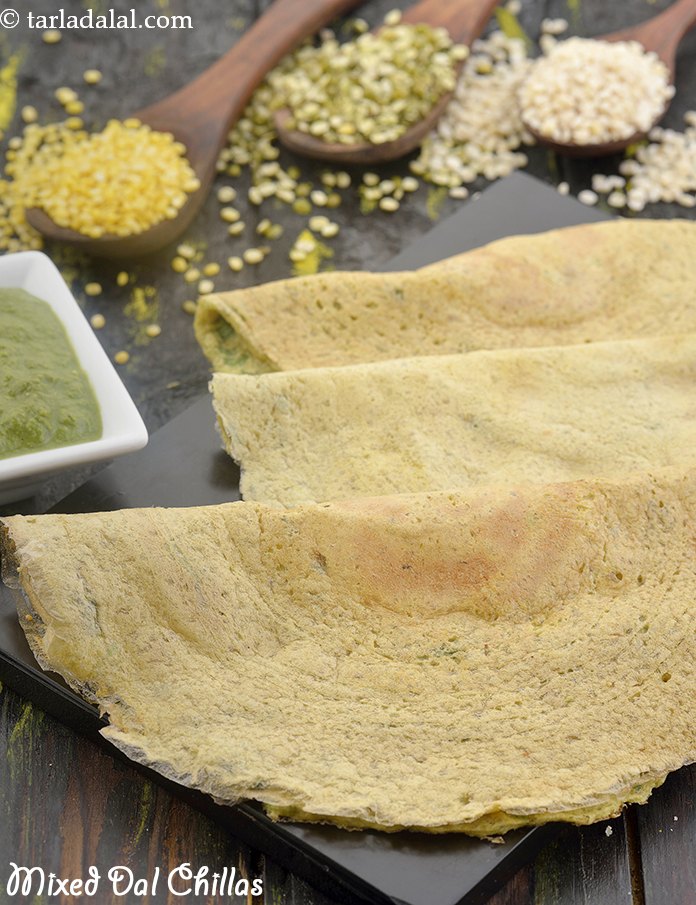
Click here to view Mixed Dal Chillas, Healthy Breakfast, Snack Recipe
Calories in other related recipes
